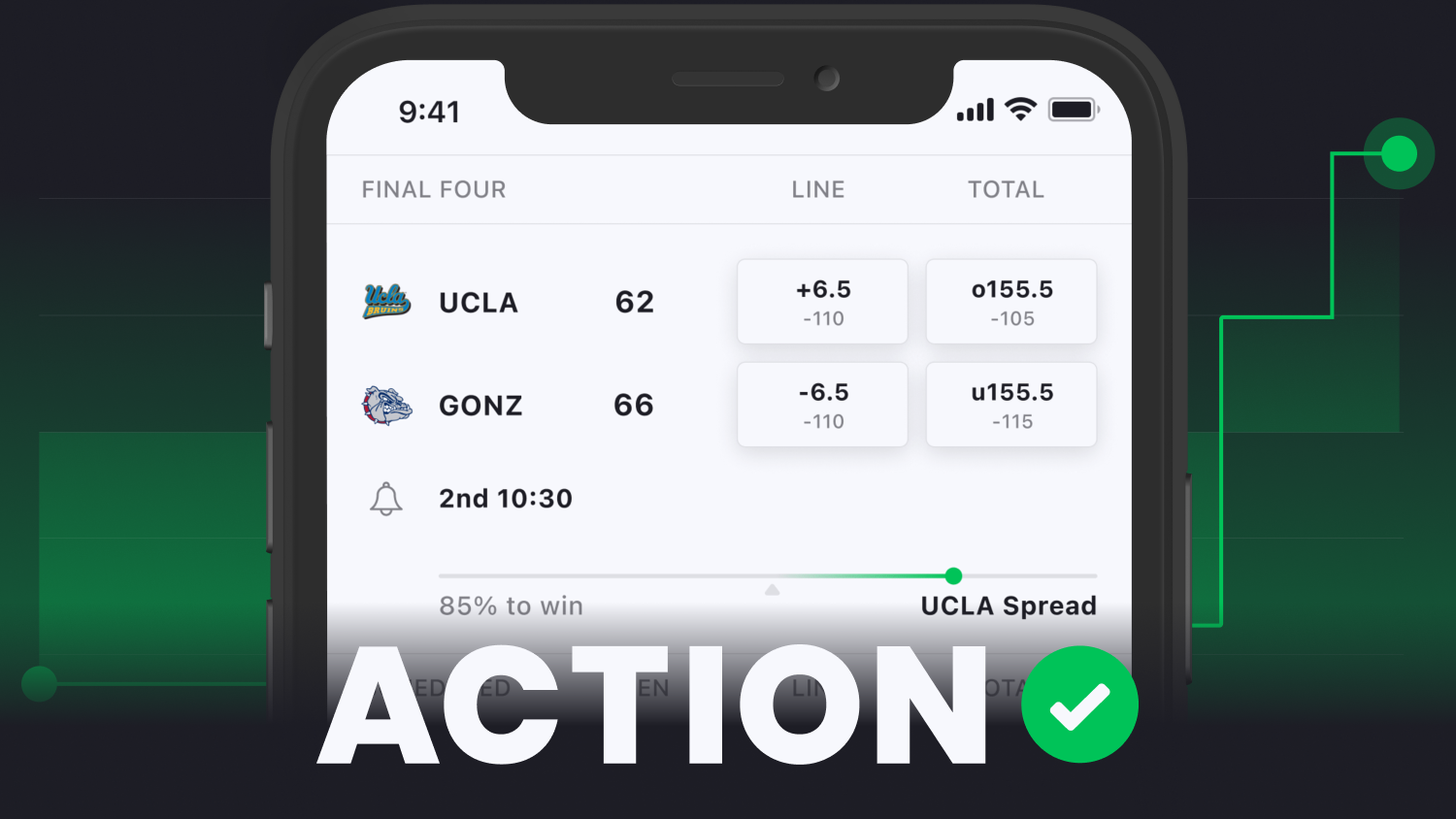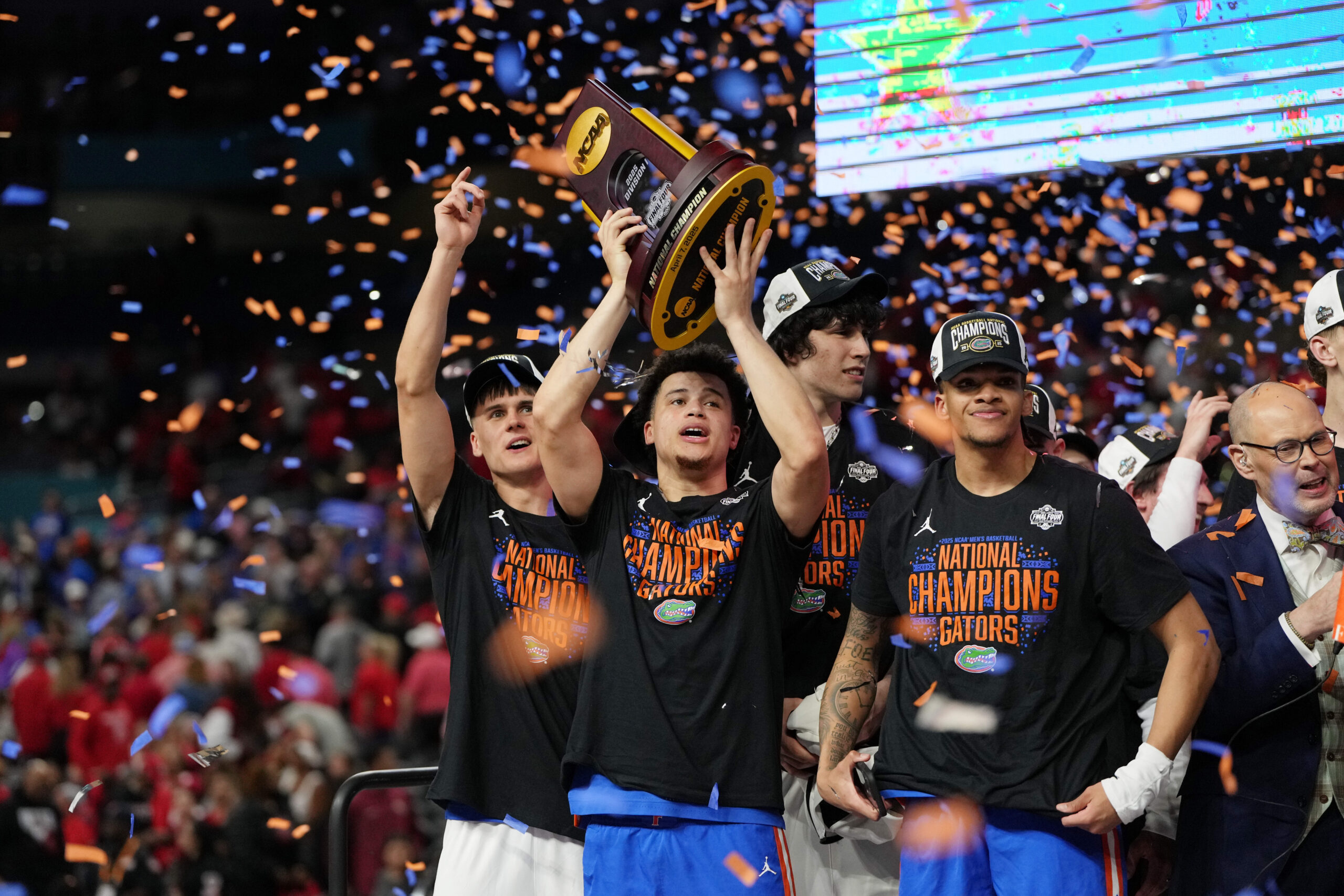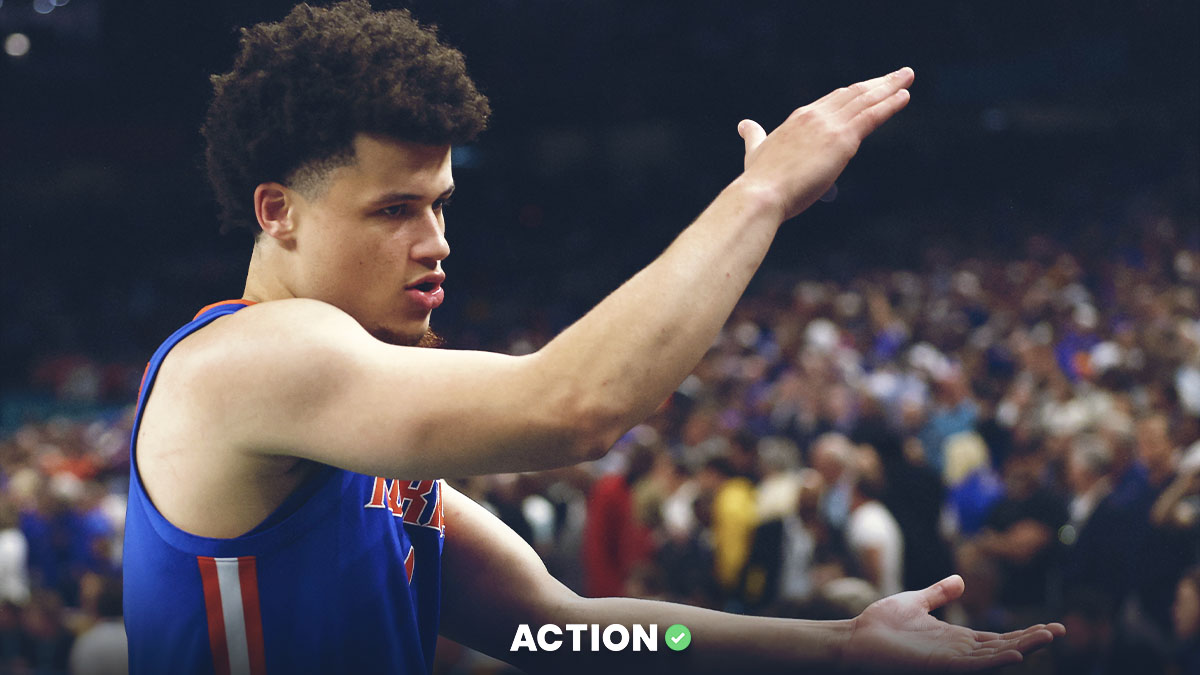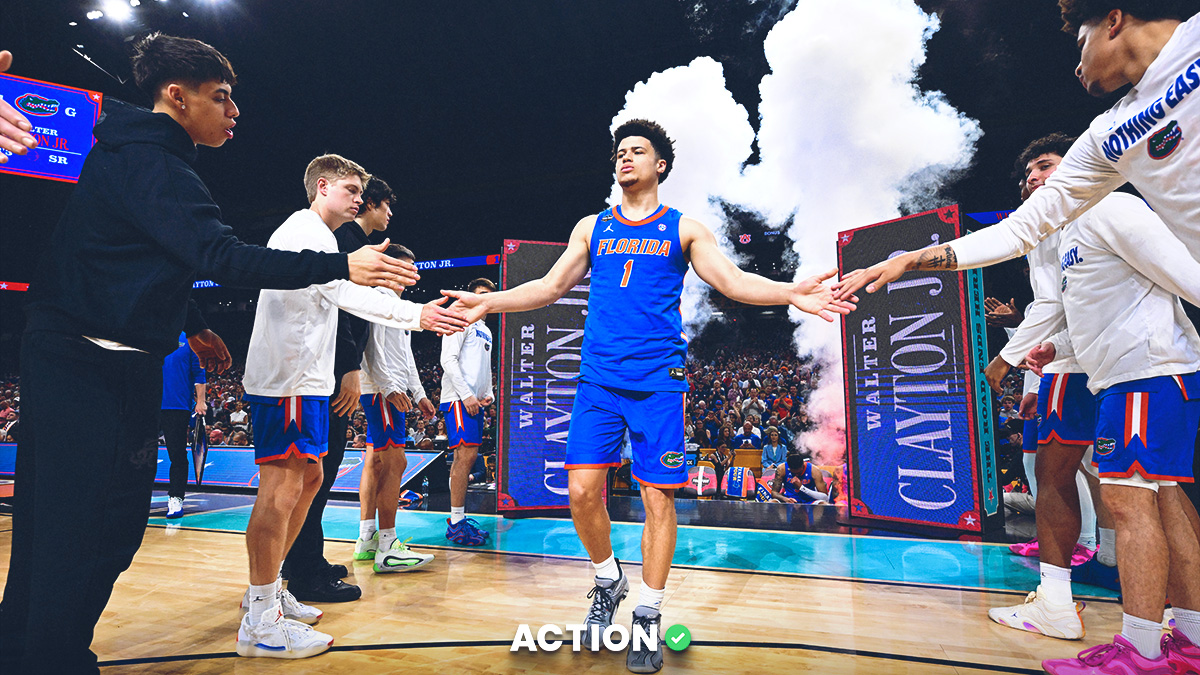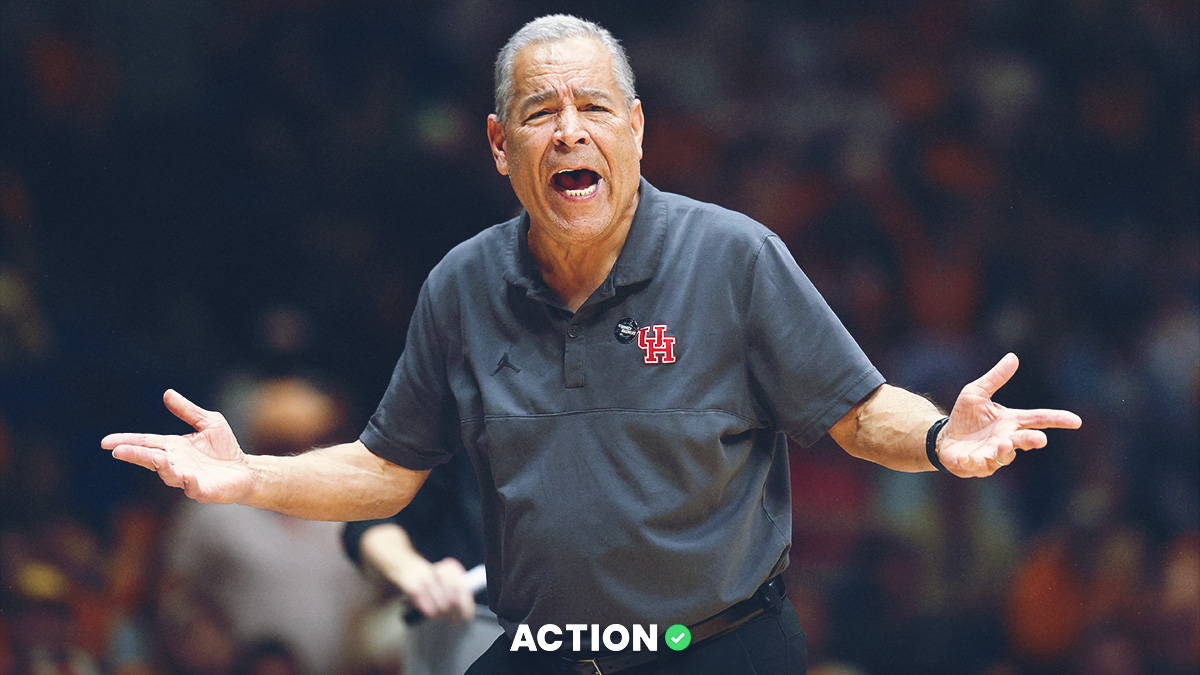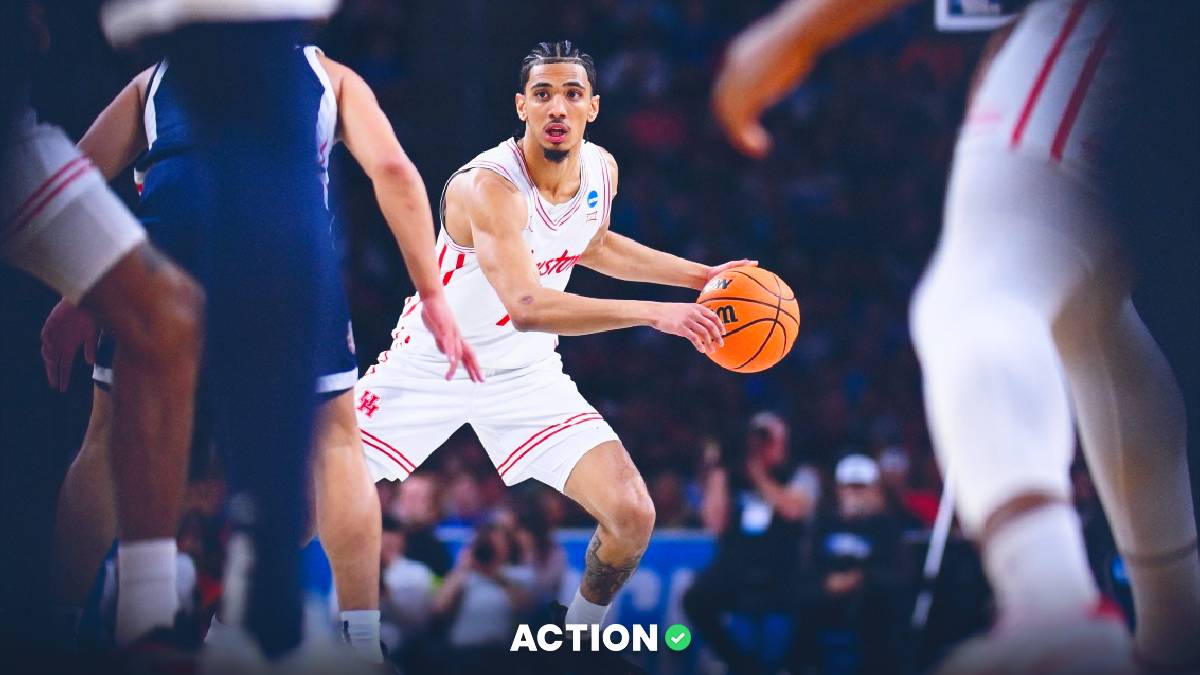Kody Malstrom: The boys are back after the release of our inaugural season-long futures piece.
While Mike came out of the gate swinging, I have some ground to make up after touting Purdue — only for it to drop its very next game in embarrassing fashion.
It’s a long season and there will be plenty of value for us to add to our portfolios, though.
Speaking of Mike, he gave us two national title futures to add, and both numbers already dropped since that piece was published.
Those futures include Arizona at +3000 (now +2200) — it squeaked out a win against Illinois and continues to look impressive as a unit — and Houston (now +2000), which went wire-to-wire with top-10 Alabama but lost by one at the very end.
As mentioned before, I gave Purdue to win the Big Ten, as I firmly believed +150 was the best number we were going to get. While the Boilermakers lost to Rutgers, their best strength was on full display in their next game against NC State. Their depth took over on their way to a 10-point win in overtime.
With plenty of the season left, it needs to be remembered that the purpose of this weekly article is for us to roll into March heavily equipped to profit with our futures.
With multiple strategies and unique ways to profit, we want a versatile portfolio, and that is what we are trying to find in the market week in and week out.
National Championship Picture

Kody Malstrom:This makes no sense.
I blinked, pinched myself, laughed out loud in my room alone in disturbing fashion, and blinked again. I’m still in shock by this number. I'm in shock at the thought of how much we can hedge out of this for profit.
This is an Xavier team that beat Ohio State, 71-65, earlier this season. They are a team that currently sits at 11-2, with its only losses being to a very good Iowa State squad and Villanova. They are also currently 18th in the nation, and you are giving me them at 100:1? Yes, please.
Do I believe they can actually win it all? Oh heavens no. This is a perfect situational future with hedging intentions.
At 100:1, we have plenty to play around with come March. Projected in the range of a 6-to-7 seed with room for improvement, you can hedge nearly their whole path for an eventual profit.
This includes betting the opposite side of them for at minimum double your investment. If they win that game, double down on the other side to make it back.
That’s the beauty of this line — there's so much room to play with. I’ll even let them ride the first round to give myself even more space to work with incase they make a deep run.
An example of what I would do: I'm using very simple math for my own purposes by assuming every money line will be -110 and putting 1 unit on them.
Barring your risk tolerance, ride the Round of 64 and 32. Come game three, put 2.2 units on the Musketeers' opponent. If Xavier wins again, put 5.3 units on its opponent to make up for the previous lost bet and initial future bet.
Follow that same pattern and eventually profit when Xavier loses, or cash 100:1 and profit the difference in lost bets on its way to the championship.
This is a team that ranks near the top-three in both AdjO and AdjD, per KenPom. They are also a team that ranks third in the Big East, behind only Villanova and UConn.
This is a deep unit, with nine players playing meaningful minutes. With four players scoring in double figures, the offensive production is spread out instead of relying on a star. This bodes well in case someone goes cold mid-March, a style of play I look for to pull off deep runs.
With Big East title potential, I see zero way that Xavier can't get in the tournament barring any drastic injuries.
Xavier doesn't play again until Dec. 28 — when it faces off against UConn at home — but it is currently 1-1 in the Big East, with a win over Marquette and a loss to Villanova.
I’ll take the 100:1 now with hedging intentions come March.
Conference Picture

Mike Calabrese:I’m already holding an Auburn national title future at 25:1, which is why I was surprised to see 6:1 SEC futures for the Tigers out in the market.
The Tigers have the roster balance and upside to reel off impressive wins, as they have this season in victories over projected tournament teams in Loyola Chicago, Syracuse and Saint Louis.
Beyond Jabari Smith, who appears headed for All-SEC honors, Auburn has the kind of balance that helped it reach the Final Four in 2019. Just as they did during that season, the Tigers have three starters averaging double digits and 10 players averaging 11 or more minutes per game.
That depth allows Auburn to play at its preferred tempo (24th), while ratcheting up the pressure on the defensive end (+6.4 TO Margin per game). That relentless combo is one of the reasons why five of the Tigers' last six victories have come by 17 points or more.
It certainly helps that the SEC appears to be wide open this season, with most books currently offering six SEC teams in the 4:1 to 8:1 range. For perspective, no other power conference has a favorite with odds longer than 2:1 as of publication.
For Auburn to take things to the next level, I believe it'll need Walker Kessler to elevate his game to give it an intimidating frontcourt combo. The North Carolina transfer has come alive in December, scoring 14 or more in three of his five appearances, while averaging four blocks per game.
If this recent uptick in his play sticks, I’m not sure teams will be able to handle Auburn’s bigs on a nightly basis. And at 6:1, I’m excited to find out if that lethal tandem plays up to its potential for the next two months.
What to Watch For

Mike Calabrese: I’m fully aware that the Johnnies haven’t won the Big East regular season title since 1992. And while “New York’s Team” may be perennial losers, they do present plenty of upside this season thanks to their dynamic backcourt.
Posh Alexander, the Big East Co-Defensive Player of the Year last season, has taken a major step forward in his sophomore season. The Red Storm's point guard is the same defensive nuisance he was last season (2.6 SPG), but he’s increased his scoring by five points per night, while bumping up his rebounds and assists, as well.
For SJU to take the next step forward, they needed a Robin to Julian Champagnie’s Batman, and now they have it.
Speaking of Champagnie, the junior wing somehow got better after spurning the NBA for one last shot at the Big Dance. The Johnnies are 8-2 with Champagnie in the lineup and he’s one of four major conference players in the nation averaging over 20 points per game along with 6.5+ rebounds.
Given the rocky path forward fraught with cancellations and postponements in January, I’m targeting teams with defined identities.
St. John’s is top-10 in pace and scoring and it forces 18 turnovers per game. That’s a great recipe to capture an upset or two on its way to a Big East title.
Villanova remains the top dog (or cat) in the conference, but I like the Johnnies’ chances given their recent track record against Nova (split last year).
At 15:1, I think they represent too much value presently, particularly when compared to Providence (10:1) and Xavier (+275).



